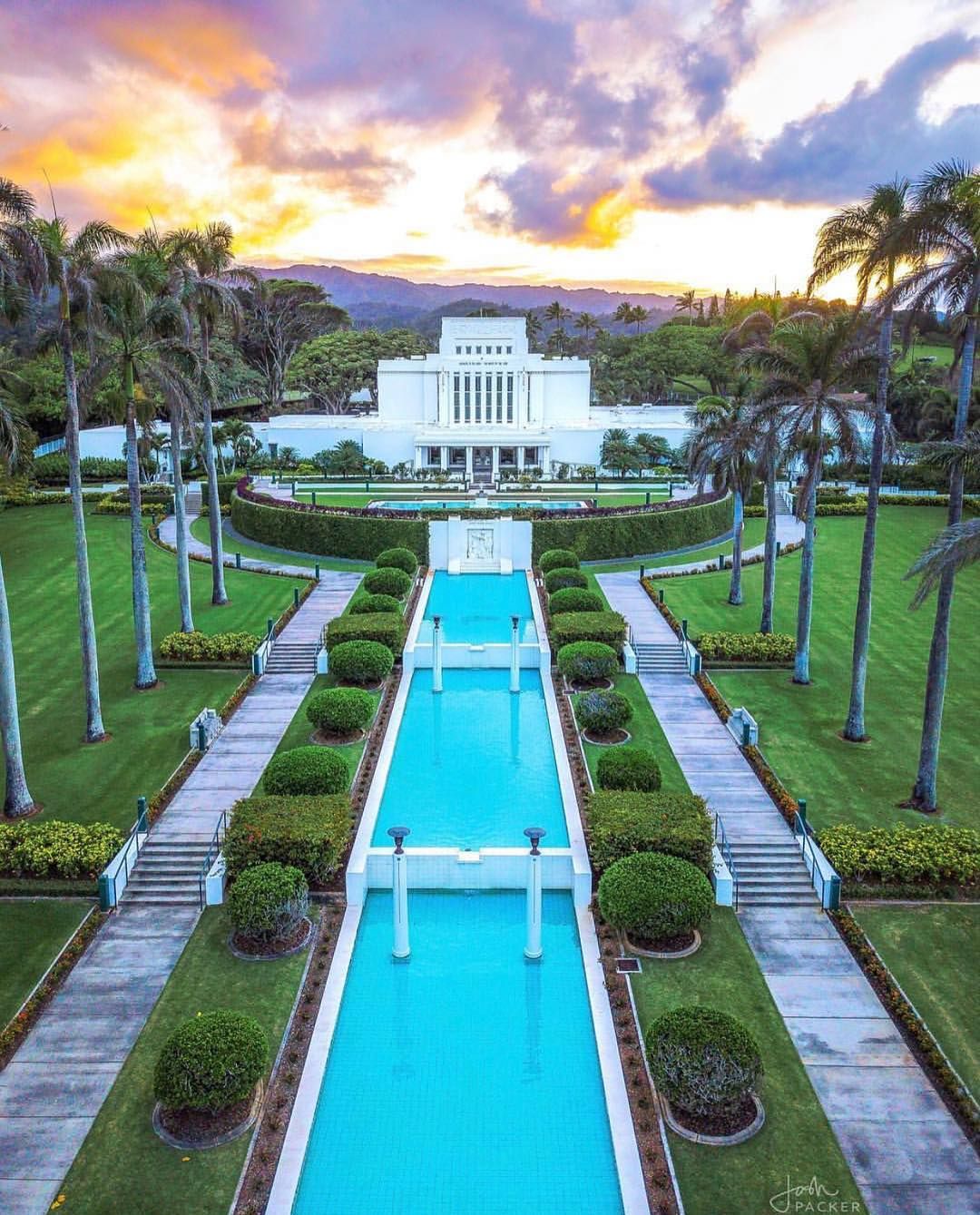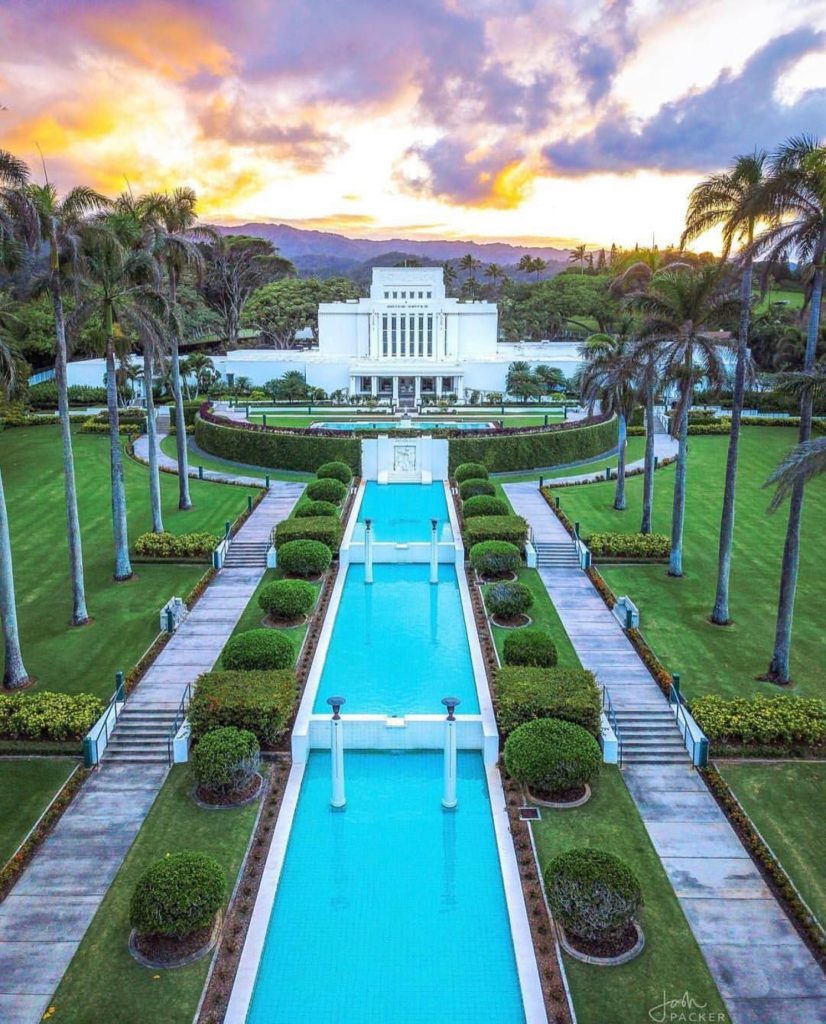Laie Hawaii Temple Fun Facts
People


The Laie Hawaii Temple land was dedicated June 1915, announced October 1915, ground breaking February 1916, and dedication November 1919 by Heber J. Grant.
In 1900 George Q. Cannon, a member of the first presidency, visited Hawaii for the fiftieth anniversary of the founding of the Hawaii Mission and promised the Saints, if they are faithful, they will one day be sealed as families for eternity. The Saints in Hawaii saw this as a prophecy that a temple would be built in Hawaii.
The Laie Hawaii Temple is the first temple dedicated outside the continental United States.
The Laie Hawaii Temple is also the first temple dedicated outside the state where Church Headquarters was located.
The Laie Hawaii Temple is on the north shore of Oahu just a half mile from the Pacific Ocean.
The Laie Hawaii Temple sits on the Church's original landholdings in Hawaii known as Laie Plantation. The 6,000-acre parcel was purchased in 1865 for $14,000.
The Laie Hawaii Temple was dedicated sixteen years before the creation of the first Hawaiian stake on Oahu in 1935.
After purchasing the land for the temple, temple builders discovered several problems with the land. The land consisted of unstable coral and sand making it necessary for a large excavation to provide solid footings for the building. Large machinery was not available and the entire excavation had to be done using picks, shovels, and blasting powder.
There was one point in the construction process when the builders had run out lumber. The temple contractor, Ralph Woolley, prayed for help in obtaining the needed supplies. Two days later a freight ship became stranded on a nearby coral reef during a storm. The captain offered the Saints the cargo of LUMBER if they would help him unload his ship!(what are the chances?!)
Crushed lava and coral were added to the concrete used to form the whole temple.
There are four sculpted panels on each side of the Laie Hawaii Temple. The friezes depict the four gospel dispensations. On the North side of the temple the frieze depicts the Book of Mormon dispensation. It depicts a man named Hagoth and his companions who are believed to be among the ancestors of the Polynesian people. In general conference overflow meeting President Samuel Woolley shared his belief that the building of the Hawaii temple was a “fulfillment of the promise that the Lord made to Lehi who . . . In blessing his son Joseph, promised that all of his seed would not be lost.” Woolley further suggested that a remnant of Joseph’s descendants ended up in Hawaii, Samoa, New Zealand, and other Pacific Islands, and that the Lord “sent his servants there in an early day in our history. . . To fulfill his promises.” When President Wooly returned to Hawaii there was a discussion to include the statue within the temple grounds and it was dedicated to include one of Lehi, blessing his son Joseph.
In front of the Laie temple is a ascending fountain consisting of four reflecting pools. At the top of the pools is a panel of a Hawaiian mother and her three children. At the head of the three pools, is a panel depicting a Hawaiian mother and her children. “I designed a group to represent Hawaiian Motherhood,” Avard explained, “or, as it is called ‘Maternity.’ . . . Motherhood was represented by a Hawaiian lady with a great shell, and she was pouring water out of this great shell to her children.” Avard considered the water coming from the shell to represent the “Fountain of Life” that a mother offers her children.
The Hawaiian islands were of special importance to the prophet Joseph F. Smith who was sent to serve a mission to Hawaii when he was only fifteen. He worked hard to get the Hawaiians a temple and passed away a year before the dedicated of the Laie Hawaii Temple.
References:
https://rsc.byu.edu/joseph-f-smith-reflections-man-his-times/joseph-f-smith-hawaiian-temple
https://rsc.byu.edu/laie-hawaii-temple-century-aloha/temple-grounds-completion










